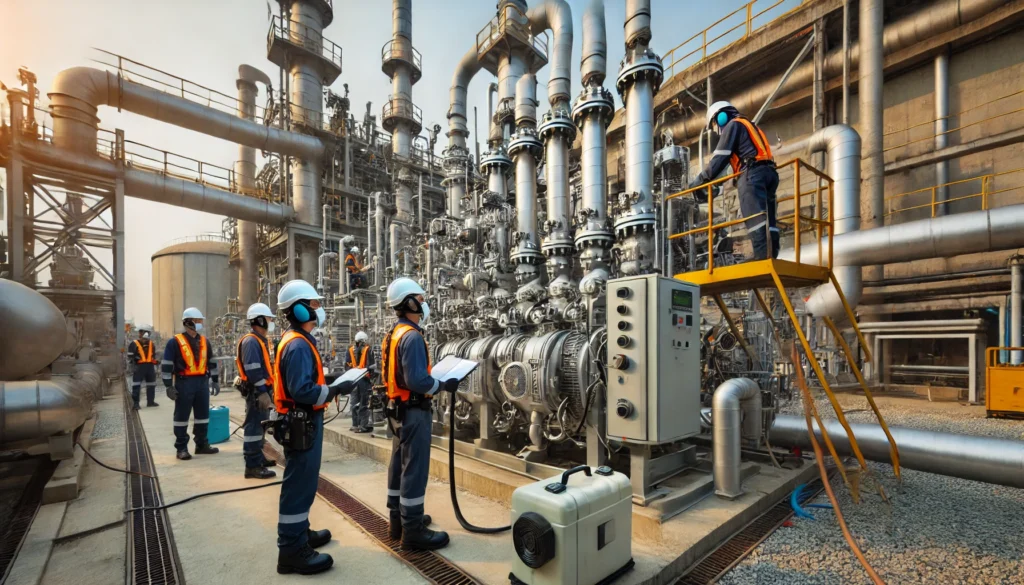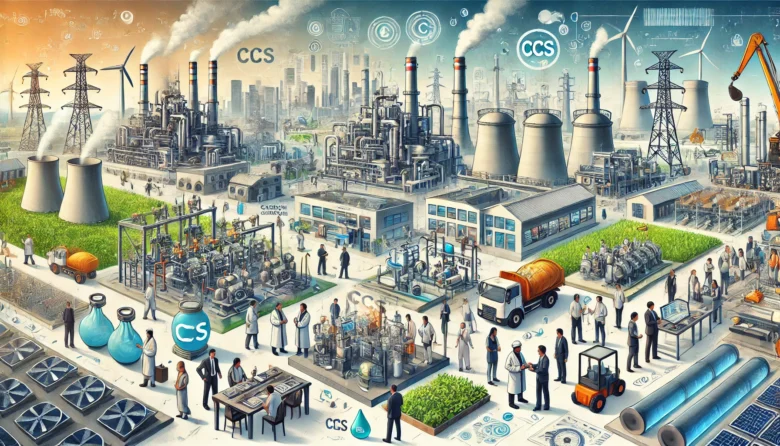Have you ever thought about what carbon capture and storage (CCS) is and why it matters? This technology is crucial in our fight against climate change. Understanding the science of carbon capture and storage is particularly relevant for the Indian public, as our country is one of the largest emitters of carbon dioxide (CO₂) globally. Let’s delve into what CCS entails and how it can help decrease our carbon footprint.
Understanding Carbon Capture and Storage.
Carbon capture and storage (CCS) is a technology aimed at lowering the amount of CO₂ released into the air. It involves capturing CO₂ emissions from sources such as power plants and industrial activities, transporting the CO₂, and storing it underground in geological formations.
How Does Carbon Capture and Storage Work?
CCS works in three main steps: capture, transport, and storage. Let’s break down each of these steps.
Capture
The first step is capturing CO₂ emissions. This can be done using several methods:
Post-combustion Capture: This method captures CO₂ from the flue gases emitted by power plants after fossil fuels have been burned.
Pre-combustion Capture: This involves converting fossil fuels into a mixture of hydrogen and CO₂ before combustion, allowing CO₂ to be separated and captured.
Oxy-fuel Combustion: This process burns fossil fuels in pure oxygen instead of air, producing a flue gas that is primarily CO₂ and water vapor, making it easier to capture CO₂.
Transport
Once captured, the CO₂ is compressed and transported to a storage site. Transportation is usually done via pipelines, but it can also be transported by ships, trains, or trucks, depending on the location and volume of CO₂.
Storage
The final step is storing the captured CO₂. The most prevalent storage technique is injecting CO₂ into deep underground rock formations, such as depleted oil and gas reservoirs or deep saline aquifers. These formations can securely contain CO₂ for thousands of years, preventing it from entering the atmosphere.

Why is Carbon Capture and Storage Important?
CCS is a crucial technology for several reasons:
Reducing Emissions: CCS can significantly reduce CO₂ emissions from industries that are hard to decarbonize, such as cement, steel, and chemical production.
Mitigating Climate Change: By capturing and storing CO₂, CCS mitigates the impacts of climate change and supports global efforts to control temperature increases.
Supporting Renewable Energy: CCS can complement renewable energy sources by providing a way to handle emissions from fossil fuel use during the transition to a fully renewable energy system.
CCS in the Indian Context
India, with its growing economy and energy needs, faces a significant challenge in reducing CO₂ emissions. CCS can play a vital role in this effort. Here are some ways CCS is relevant to India:
Industrial Applications
India has a large industrial sector, which includes cement, steel, and chemical industries. These sectors are significant sources of CO₂ emissions. Implementing CCS technology in these industries can help reduce their carbon footprint while maintaining productivity.
Energy Production
India depends significantly on coal for its electricity production. While the country is making strides in renewable energy, coal is expected to remain a significant part of the energy mix for the foreseeable future. CCS can help mitigate the emissions from coal-fired power plants, making energy production cleaner.
Economic Opportunities
Developing and deploying CCS technology in India can create new economic opportunities. This includes jobs in CCS technology development, construction, and maintenance. Additionally, it positions India as a leader in innovative climate solutions.
Challenges and Solutions
Despite its potential, CCS faces several challenges:
Cost: CCS technology is expensive, and the cost of capturing, transporting, and storing CO₂ can be high. However, continued research and development can help lower these costs over time.
Infrastructure: Developing the infrastructure for CO₂ transport and storage requires significant investment. Building a network of pipelines and storage sites is essential for widespread CCS deployment.
Public Acceptance: Public understanding and acceptance of CCS are crucial. Educating the public about the benefits and safety of CCS can help gain support for this technology.
Local Success Stories
Tata Steel’s Carbon Capture Project
Tata Steel, one of India’s largest steel producers, has launched a project to capture CO₂ from its blast furnace operations. This initiative marks a major step in reducing emissions in the steel sector and shows India’s dedication to implementing CCS technology.
NTPC’s CCS Initiatives
National Thermal Power Corporation (NTPC), the largest power utility in India, is investigating CCS technologies to lower emissions from its coal-fired power plants. NTPC’s initiatives include pilot projects and collaborations with international organizations to develop effective CCS solutions.
Conclusion
Understanding carbon capture and storage is essential for tackling climate change. This technology offers a way to reduce CO₂ emissions from industrial processes and power generation, making it a valuable tool for countries like India. By investing in CCS, India can take a significant step towards a sustainable future. Let’s embrace this technology and work together to protect our planet.
Author’s Note
Thank you for reading this blog. As an advocate for sustainable technologies, I hope this article sheds light on the importance of carbon capture and storage. Together, we can make a meaningful impact in the fight against climate change.
G.C., Ecosociosphere contributor.




